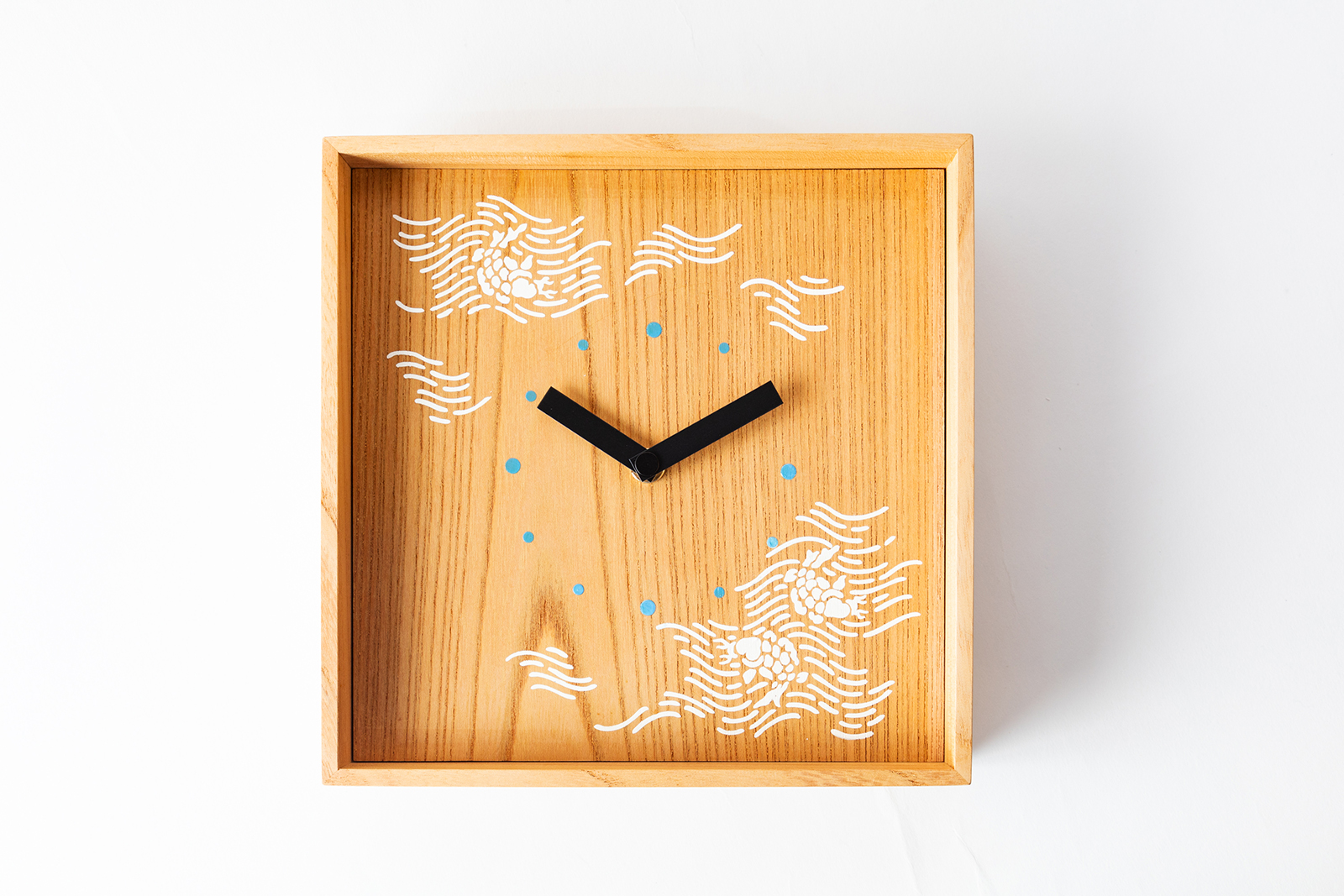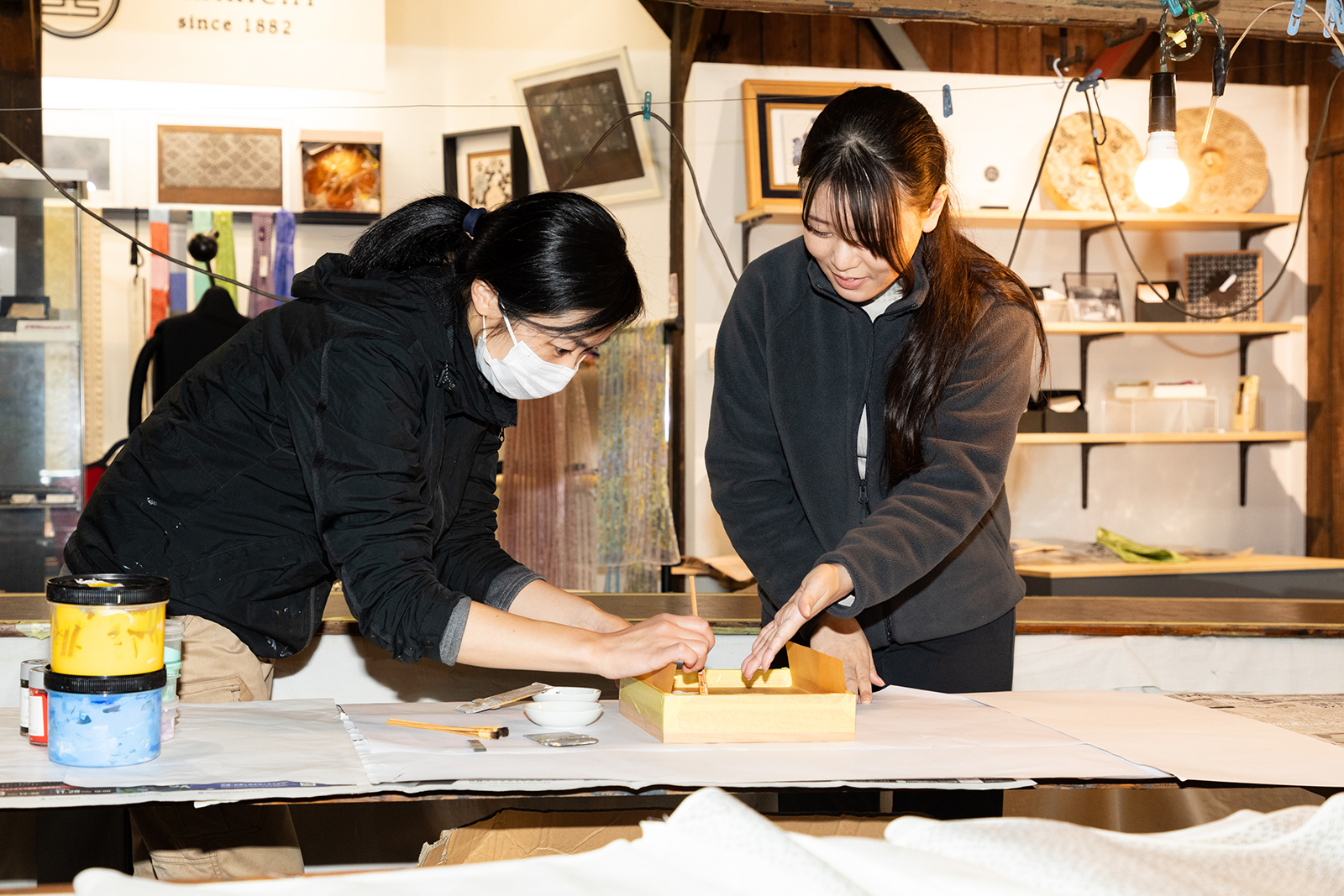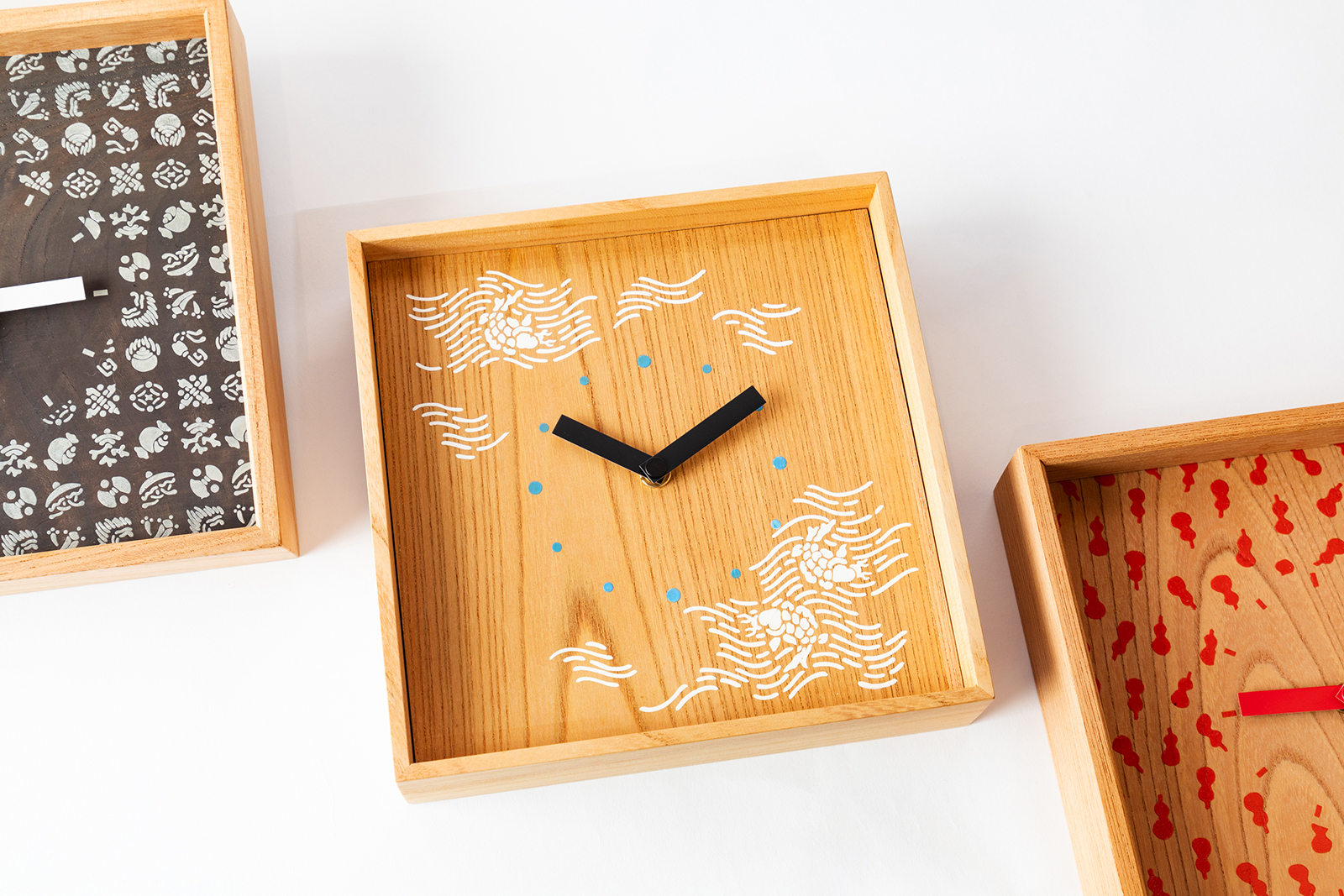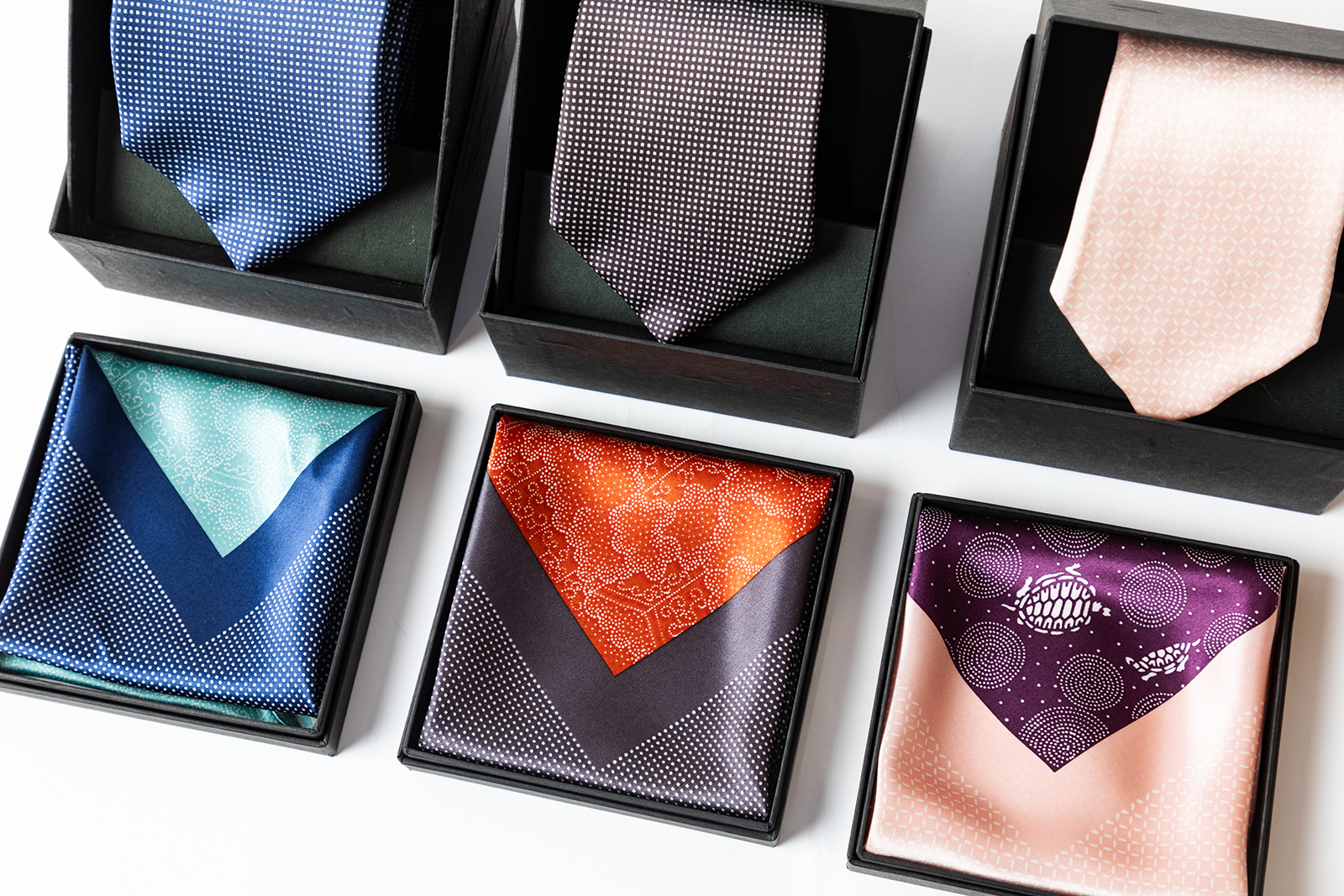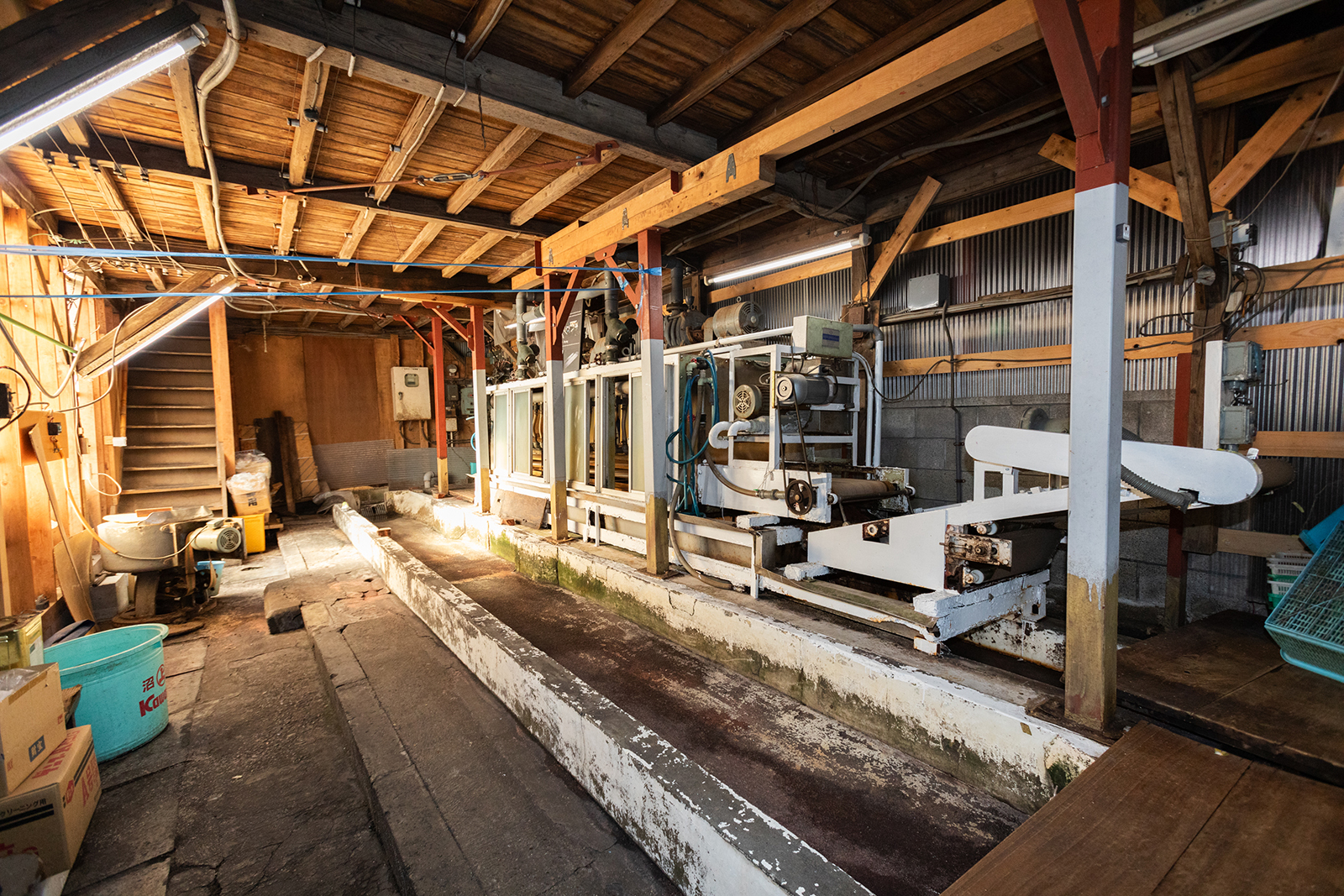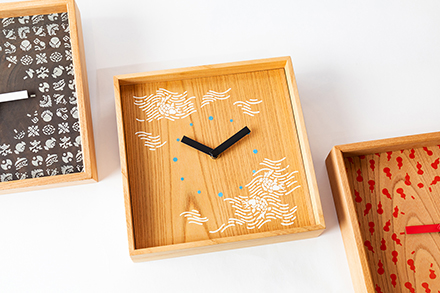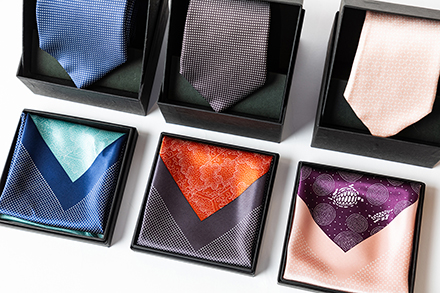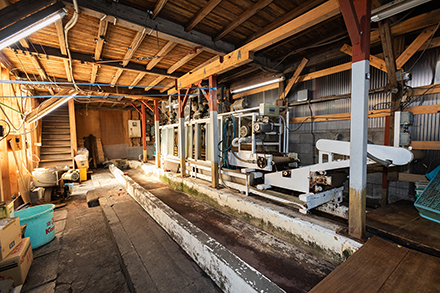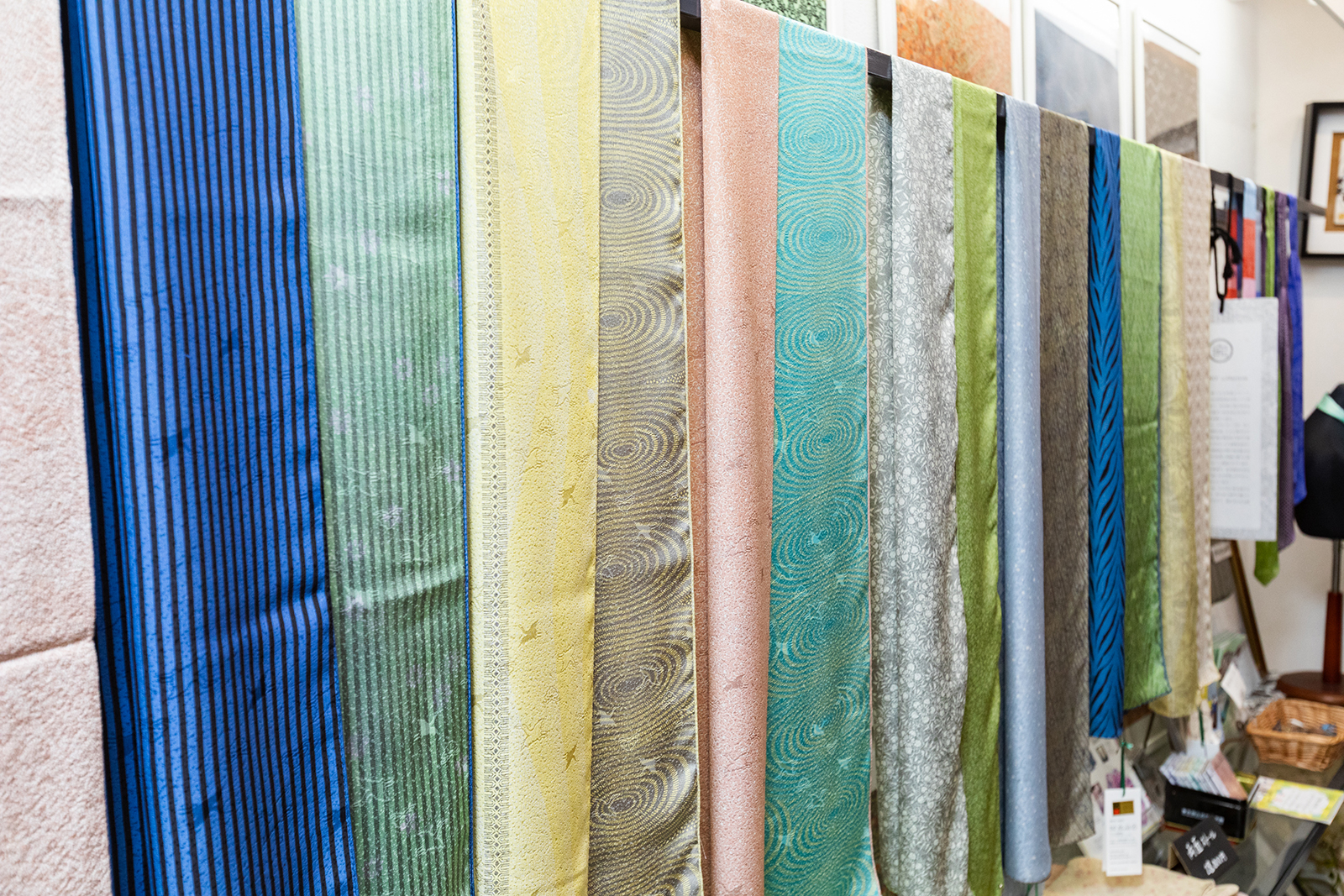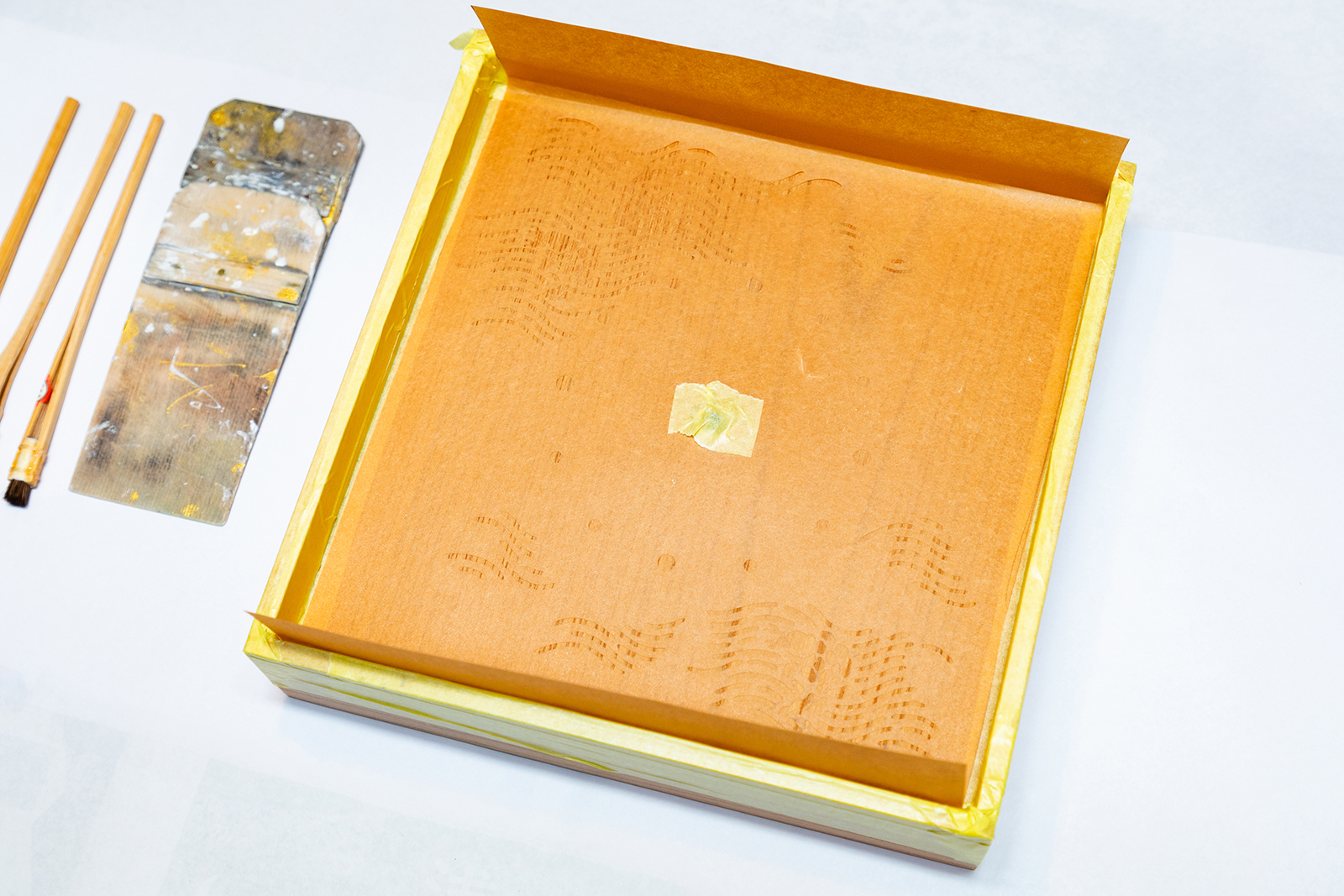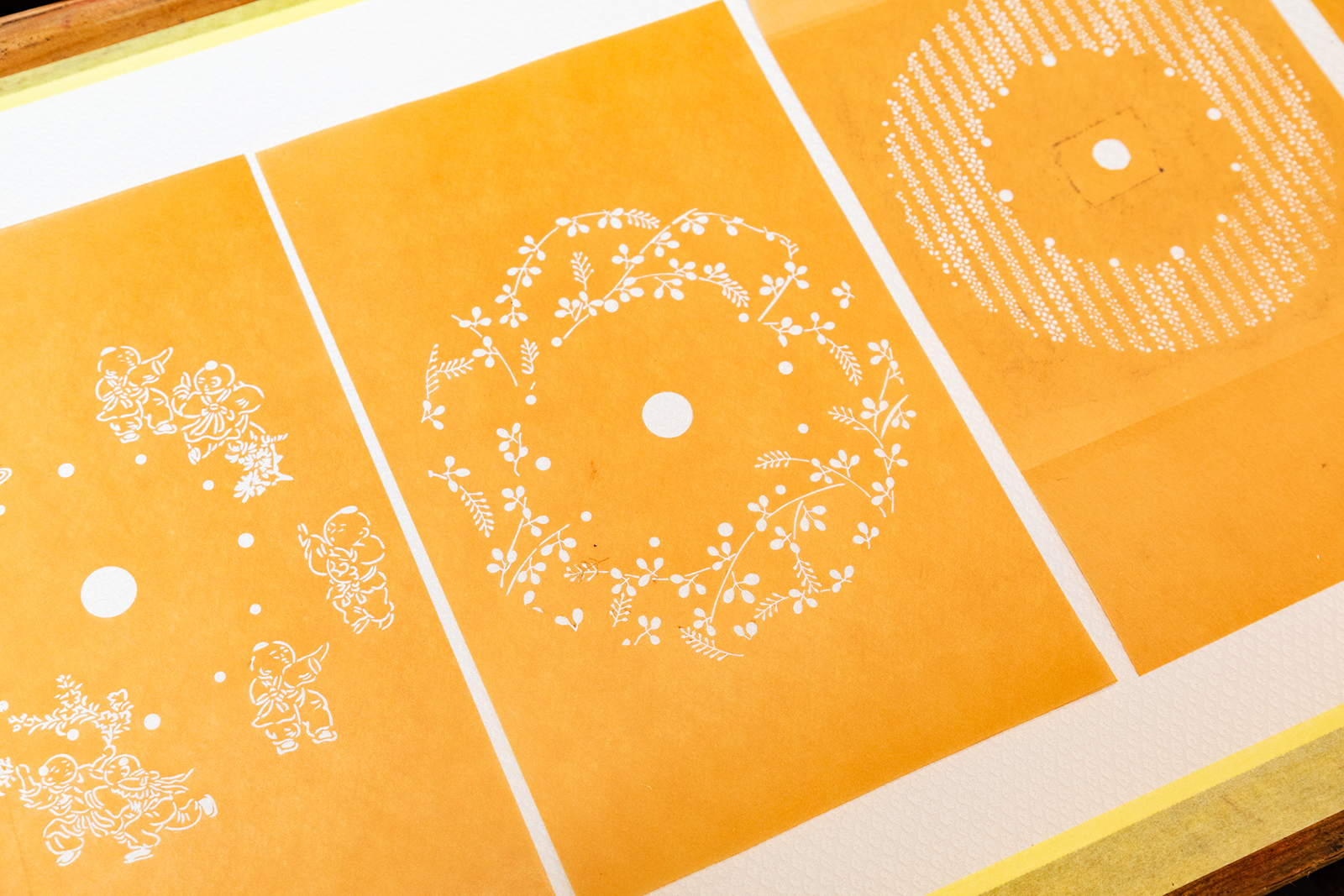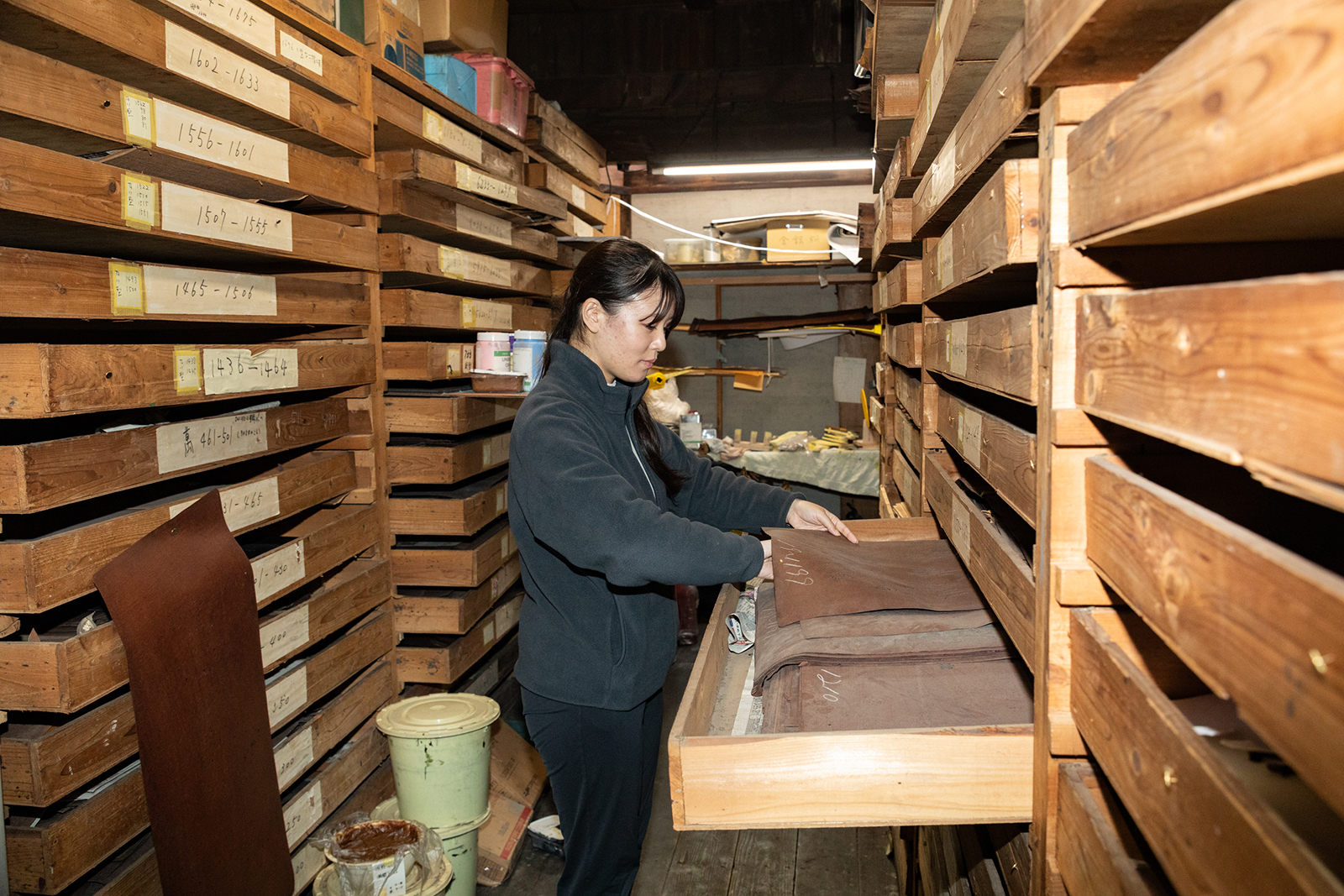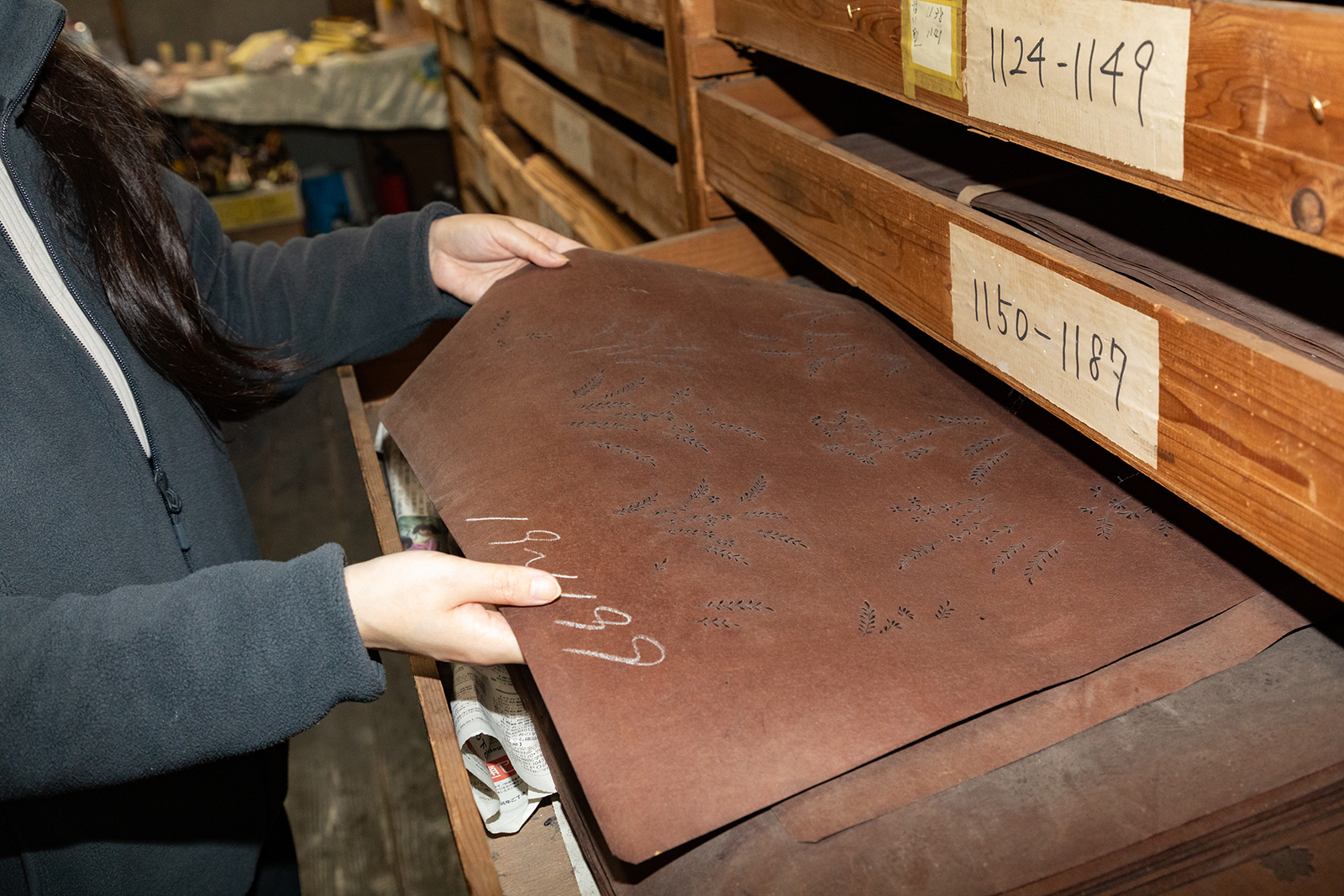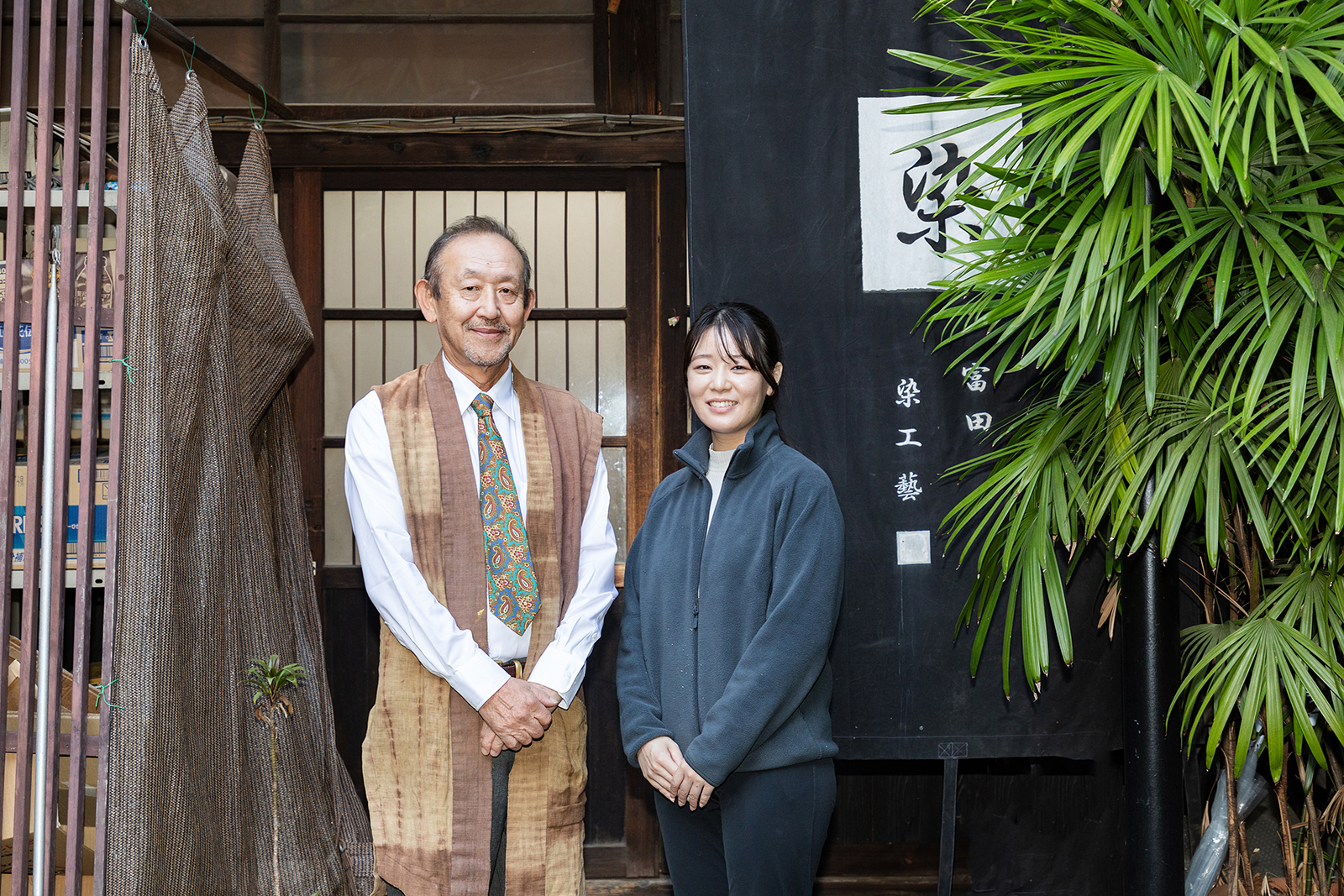Tokyo Some-Komon dyeing and its origins in Edo Komon, loved by the Edo townspeople
One of the cultural elements symbolizing the gorgeousness of Edo is Edo Komon. Its roots are thought to lie in a dyeing method that used stencils to dye patterns, which began in the Murimachi era. In the Edo period, patterns using stencils came to be applied to the upper and lower clothing set of the Ai-zome (indigo-dyed) warrior uniform.
Subsequently, in the mid-Edo period, townspeople started to compete over the uniqueness in their Komon patterns, and Edo Komon culture began to take shape. Numerous artisans inherited the Edi Komon tradition and preserved it as Tokyo Some-Komon dyeing. And it continues to gorgeously decorate the lives of people today.
Become completely absorbed in applying color to your clock dial
In the Tomita Senkougei activity, you will create a "Komon Wood Clock" by using Tokyo Some-Komon dyeing techniques to decorate a wooden clock. You can select patterns and color combinations from among multiple options, letting you create the design of your choice. And because each Komon pattern has its own individual meaning, learning about the roots of the Komon patterns will give you insight into the thoughts and feelings of people from days of old, and immerse you even further into the world of Tokyo Some-Komon dyeing.
Inset the stencil onto square clock dial with its beautiful conifer wood grain, and use a spatula to thinly spread starch paste mixed with dye pigment. The more your spread the firm yet flowing starch paste, the more the stencil pattern is reproduced on the clock. The secret to spreading the pigment is to do it calmly, and decisively. It is important to maintain a constant speed and keep the spatula in motion without hesitating.
After completely spreading the starch paste over the stencil without missing any spots, slowly lift the stencil away. After spending about 30 minutes intensely concentrating on applying the pigment, your clock dial will have a beautiful pattern painted on it.
Encounter 120,000 stencils hand carved by Ise artisans
While the starch paste is drying, it is time to learn about Tokyo Some-Komon dyeing. Enter a studio in which artisans work with dyeing day and night, and feel firsthand the history of Tokyo Some-Komon dyeing history. First you are guided to a storehouse for Ise stencils with Komon patterns. The stencils are made by Ise artisans hand carving patterns one sheet at a time on Japanese paper made firm by being treated with persimmon tannin.
Tomita Senkougei, which counts 140 years since it opened, has an accumulated collection of over 120,000 stencils. Seeing stencils with names like longevity and assorted autumn leaves, you can sense the sophisticated playfulness of embedding wishes in the patterns, and the wishes that have been embedded.
Appreciate the value of Komon produced by artisans
Tokyo Some-Komon dyeing process is divided into the steps of "Katatsuke" (patterning), in which the pattern stencil is attached to the fabric, "Shigoki" (application), in which the base color is applied onto the fabric, "Mushi" (steaming), in which the pigment is embedded into the fabric, "Mizuarai" (water washing), in which the starch paste is washed off of the fabric, and finally "Kansoh" (drying). You can see the facilities at which each process is conducted within the studio. And if the timing is right, you may just be able to see an artisan at work. Tomita Senkougei is set up so visitors can see explanations and videos for each process, making this an opportunity to not only see the facilities, but also understand how the equipment you are viewing is actually used. If you tour through all of the processes and see the studio space where artisans produce Komon patterns, you will develop a completely new appreciation of the value of Komon.
Right around the time you finish touring the studio, the coloring on your clock dial should be dry. The final step is to select the hands of the clock from among the three color choices of red, white, and black. Once the hands are affixed to your clock, your project is finished. You can take your Komon Wood Clock back with you that very day. It is a wonderful treasure that can be used as both a wall clock and a desk clock. When you look at the clock every day, you can think back on your time spent encountering the history and technique of Tokyo Some-Komon dyeing.
Enjoy the casual stylishness treasured by the people of Edo
The beauty of Edo Komon, the predecessor to Tokyo Some-Komon dyeing, is in its casual stylishness. From detailed patterns only visible when viewed up close, we can appreciate the special sense of chicness that was treasured by the people of Edo. Ms.Hitomi Oshima, one of our artisans, comments that through this activity, "I would like everyone to experience the universal attraction of Tokyo Some-Komon dyeing as a living artform that is not weighed down with a sense of oldness." We hope you place the Komon Wood Clock you designed yourself in an easily viewable spot and experience the joy of having this casual stylishness within your daily life.
Tomita Senkougei opened in 1882 in Asakusa Umamichi, Tokyo (present day Asakusa, Taito Ward). In 1914, it moved its studio to Nishi-Waseda to take advantage of the clear waters of Kanda River. It has preserved the techniques of Komon dyeing for more than 140 years and continues to promote the sense of chicness that was a part of Edo culture. In 2012, it launched a fashion accessory brand named SARAKICHI. This brand produces a modern style that dips into the current of Tokyo Some-Komon dyeing and Edo-Sarasa (calico).
